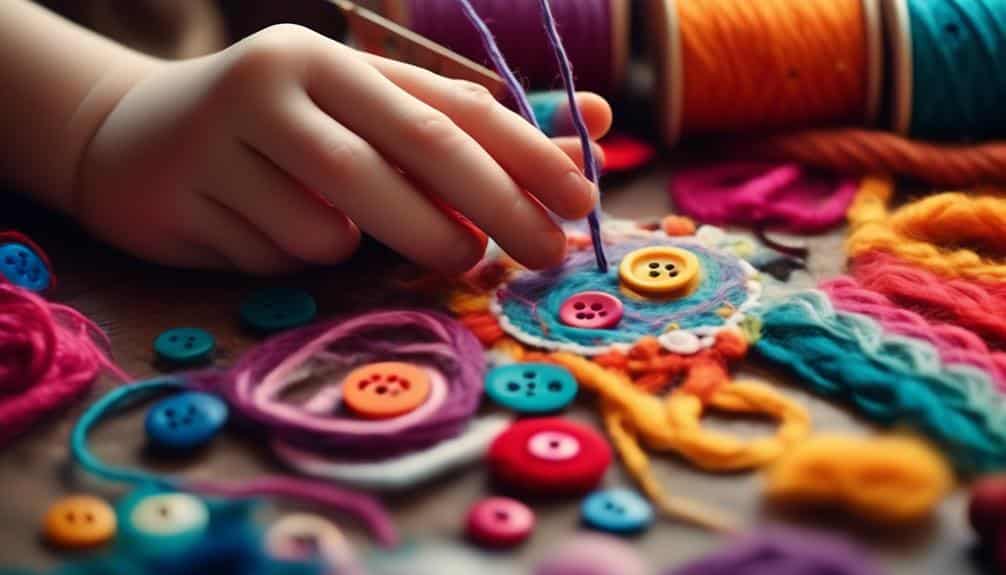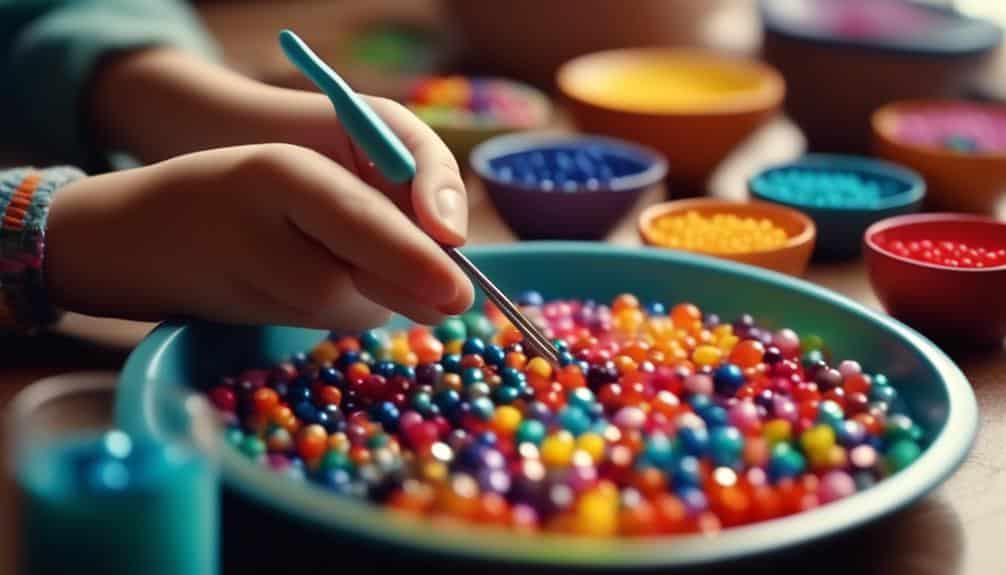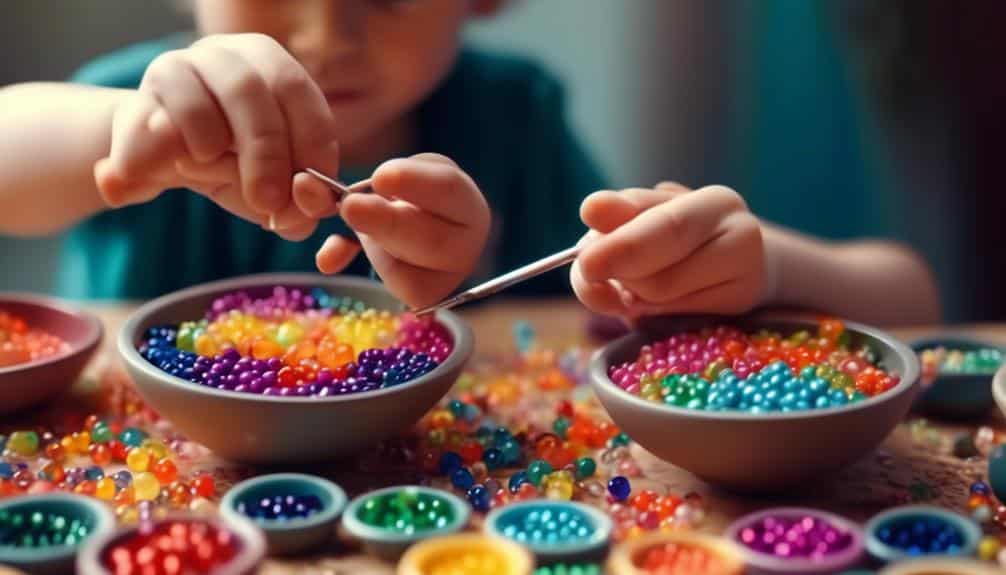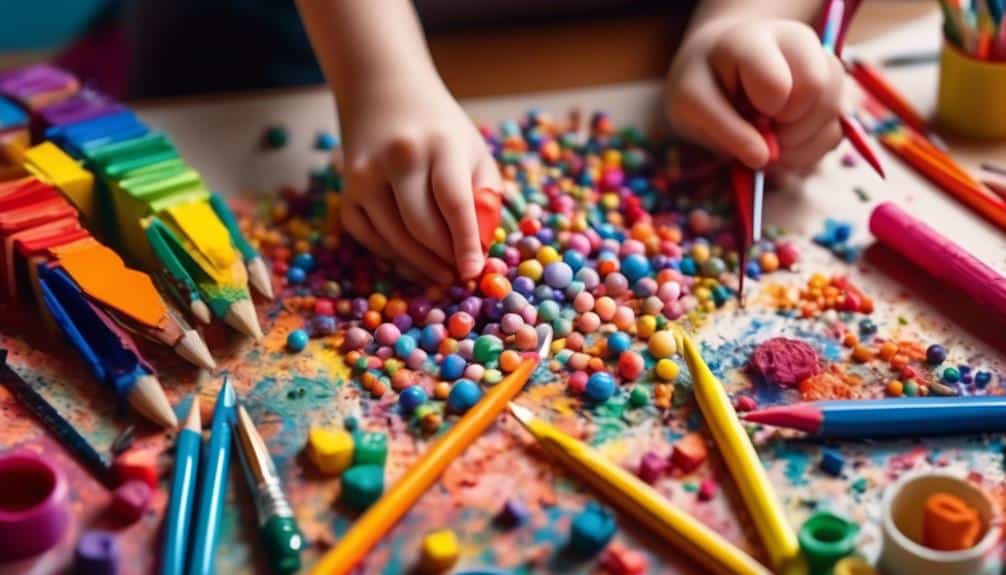Kid’s fine motor skills are fundamental in the developmental landscape of a child, laying the groundwork for a myriad of daily tasks, academic undertakings, and eventual professional competencies. As parents, educators, and therapists, it is incumbent upon us to not only recognize the importance of children’s fine motor skills but also to actively foster their development through targeted activities and interventions. The following discourse will present 12 pragmatic tips to enhance children’s fine motor skill acquisition. These recommendations are rooted in clinical expertise and aim to provide a scaffold for children to achieve fine motor milestones.
Each tip represents a building block in the intricate architecture of agility and precision that fine motor skills demand. As we examine these tips, we must consider each child’s needs, as the path to acceptable motor proficiency is as unique as the children themselves. Let us embark on a journey to explore these foundational elements, which are instrumental in equipping children with the skills necessary for success in their multifaceted lives.
Key Takeaways
- Playdough and clay activities are excellent for fine motor skill development, as they improve finger movements and coordination and strengthen hand muscles.
- Scissor skills and cutting activities are crucial for developing talent and control, essential for tasks like writing and buttoning clothing.
- Bead threading and beadwork enhance fine motor skills, hand-eye coordination, and creativity while fostering patience and self-confidence.
- Building blocks and construction activities, puzzles, sorting games, drawing and coloring, and buttoning and zipping contribute to developing fine motor skills, creativity, problem-solving abilities, and hand-eye coordination.
Embrace Playdough Creativity
Sculpting with Play-Doh sparks children’s imagination and significantly enhances their fine motor skills through creative manipulation and tactile exploration. Engaging in fine motor skills activities with Play-Doh, such as squeezing, pinching, and rolling, supports the development of finger movements and coordination. These playful tasks encourage children to use their hands to improve their pincer grasp, an essential skill for writing and other daily activities.
By incorporating Play-Doh into arts and crafts projects, children undergo sensory exploration that is both enjoyable and educational. This form of tactile play allows them to experiment with creating various shapes and objects, which promotes hand-eye coordination and provides an avenue for self-expression. As children knead and shape the dough, they unknowingly strengthen their hand muscles, laying a foundation for more intricate fine motor skills.
For those dedicated to serving the developmental needs of children, embracing Play-Doh creativity is a practical and effective method to enhance fine motor skill development. It offers a versatile medium that is as beneficial for skill-building as for inspiring artistic expression in young learners.
Practice Scissor Skills
Moving on to the refinement of scissor skills, it is crucial to begin by selecting child-safe scissors appropriate for a child’s age and stage of development. They can steadily enhance their skill and control by incorporating various cutting activities into a child’s routine, such as snipping different textures and materials. Monitoring progress through the complexity of shapes and patterns cut can help caregivers and educators tailor the learning experience and celebrate the child’s exemplary motor skill development achievements.
Selecting Safe Scissors
When introducing scissors to children for skill development, selecting a pair with rounded tips is essential for ensuring safety during practice. Children strengthen their fine motor skills using tools like scissors, which are crucial for tasks ranging from writing to buttoning clothing. Comfortable, easy-to-grip handles are essential for better control, minimizing frustration, and maximizing success.
| Feature | Benefit |
|---|---|
| Rounded Tips | Prevents injury during cutting activities |
| Spring-Action | Assists children with opening the scissors, reducing hand fatigue |
| Blade Guard | Offers additional safety when scissors are not in use |
Varied Cutting Activities
Having established the importance of selecting safe scissors, engaging children in varied cutting activities to practice and enhance their scissor skills is equally crucial. These activities are pivotal for bolstering their fine motor skills and are excellent for preschoolers. To assist in facilitating this development, consider incorporating the following exercises:
- Cut materials like paper, cardboard, or felt to diversify the tactile experience.
- Practice cutting along different lines: straight, curved, and shapes.
- Create projects with a purpose, like paper chains or collages, to motivate engagement.
- Introduce simple patterns and progress to more intricate designs for advanced skill building.
- Encourage autonomy by allowing children to choose their cutting activities, fostering creativity and talent.
Progress Tracking Methods
Implementing progress-tracking methods is essential for parents and educators to systematically gauge a child’s advancement in fine motor skills, particularly scissor use. A progress chart can be a valuable tool to monitor the improvement in a child’s scissor control and cutting abilities. By documenting the types of lines and shapes a child can cut, adults can observe and encourage a child’s journey to mastering fine motor development. Here is a simple table to help visualize this assessment:
| Date | Skill Level | Observations |
|---|---|---|
| 2/15 | Beginner | Straight lines; some assistance needed |
| 3/15 | Developing | Curved and zigzag lines; more control |
| 4/15 | Proficient | Complex shapes; cuts independently |
Creating a cutting skills portfolio and utilizing a rating scale are practical progress-tracking methods that clearly illustrate growth and areas needing attention.
Explore Bead Threading
Bead threading is a versatile activity that captivates children’s interest and significantly enhances their fine motor skills. Starting with larger beads on simple materials like pipe cleaners sets a foundation, while gradually introducing smaller beads on strings or laces challenges agility and coordination. Threading beads bolsters hand-eye coordination, precision, and bilateral coordination, making them essential to a child’s fine motor skill development.
Selecting Appropriate Beads
The journey into fine motor skill development often begins with selecting suitably sized beads for threading, which can significantly enhance a child’s tactile exploration and mastery. Bead threading is a cornerstone of fine motor activities that can improve manual dexterity and hand-eye coordination. Here are a few tips to consider when selecting beads:
- Start with larger beads, progressing to smaller sizes as skills improve.
- Introduce a variety of shapes to stimulate cognitive and tactile engagement.
- Mix textures for sensory exploration and manipulation skill-building.
- Create opportunities for pattern-making to encourage creativity.
- Always supervise young children to ensure safe handling and usage.
These steps will foster fine motor skill development and provide children with a fun and educational experience.
Enhancing Threading Techniques
Exploring various threading techniques with different types of beads can significantly enhance a child’s hand-eye coordination and fine motor skills. By encouraging children to handle and thread beads of varying sizes and textures, they engage in a fun activity and develop critical skills. Starting with larger beads helps little ones gain confidence as they build acceptable motor strength and precision. As their skill improves, smaller beads can be introduced to further challenge them.
Creating patterns and sequences during bead threading supports cognitive development, strengthening hand muscles and improving finger movements. Colorful and textured beads add a sensory dimension to the activity, making it an enriching experience for children as they grow and learn through play.
Benefits of Beadwork
Building on the foundational skills honed through threading techniques, the multifaceted benefits of beadwork extend beyond simple coordination to encompass cognitive and creative development in children. Bead threading, often used in occupational therapy, helps build fine motor skills critical for everyday activities. Children refine their talent and muscle control playfully and productively by engaging in this precise task.
- Enhances hand-eye coordination, crucial for academic and daily tasks
- Improves finger dexterity, aiding in writing and computer use
- Promotes creativity and imagination, encouraging unique expression
- Foster’s patience and focus contribute to cognitive development
- Instills a sense of accomplishment, boosting self-confidence in abilities
Beadwork is an activity and a fun tool for growth and learning.
Encourage Building Blocks
Introducing building blocks as a play activity can significantly bolster a Kid’s fine motor skills while sparking their creativity and imagination. As children stack, connect, and construct with these versatile toys, they engage in a fun fine motor skill workout essential for their developmental progress.
Grasping blocks, aligning them, and balancing structures require precision and control, enhancing hand-eye coordination. Additionally, their muscle memory strengthens as they manipulate the various shapes and sizes, improving agility.
| Benefits of Building Blocks | How They Support Development |
|---|---|
| Enhances hand-eye coordination | Precise movements guide eye-tracking |
| Strengthens muscle memory | Repeated actions reinforce motor patterns |
| Reinforces spatial awareness | Building in 3D space aids cognitive growth |
Furthermore, the simple task of cleaning up blocks post-playtime offers another opportunity to build fine motor skills. Picking up small pieces and placing them back into storage containers works the tiny muscles in the hands and fingers, promoting strength and control.
Incorporating building blocks into a child’s play routine is a source of entertainment and an investment in their motor skill development. By fostering these skills through constructive play, caregivers and educators can support children in building a solid foundation for future learning and growth.
Introduce Simple Sewing

As we transition from building blocks to threading needles, introducing simple sewing is an engaging way to enhance children’s fine motor skills further. Selecting appropriate materials, such as large, blunt needles and soft fabrics, is crucial to creating a safe and enjoyable learning environment. Teaching children basic stitching techniques, including the running stitch and backstitch, lays the foundation for sewing proficiency and encourages the development of precision and skill.
Choosing Sewing Materials
Selecting suitable materials is crucial when introducing children to the basics of sewing, ensuring their safety and the development of their fine motor skills. To help your child build acceptable motor competency through sewing, consider these child-friendly sewing tools:
- Blunt Needles: Safe for little fingers, reducing the risk of injury.
- Yarn: Thick and easy to handle, ideal for beginner stitches.
- Burlap Fabric: Its loose weave is forgiving for novice sewers.
- Embroidery Hoops: Secure the fabric, making the sewing process smoother.
- Plastic Sewing Cards: Offer a fun and simple way to practice needlework.
Using these materials can facilitate a positive sewing experience, fostering motor skill growth in a safe, engaging, and supportive manner.
Basic Stitching Techniques
To lay the foundation for proficient sewing skills, children should first master basic techniques such as threading a needle and tying secure knots. Starting with child-friendly sewing kits can make this learning process accessible and fun. These kits often include large, blunt needles that are easier for small hands to handle and colorful threads to capture a child’s interest. Simple projects, such as attaching buttons to fabric or practicing straight stitches, are ideal for honing hand-eye coordination and precision—critical components in developing fine motor skills.
As children manipulate the needle and thread, the small muscles in their hands are strengthened, laying the groundwork for more complex basic stitching techniques. Encourage children’s creativity by introducing varied fabrics and thread patterns, allowing them to explore textile diversity while they learn.
Craft With Pipe Cleaners
Harnessing the versatility of pipe cleaners can significantly advance a child’s fine motor skill development through engaging in crafting activities. When children manipulate these flexible materials, they create lea, rn, and enhance crucial foundational skills for writing, buttoning, and other everyday tasks.
Engage with these practical activities to support a child’s journey in developing their fine motor skills:
- Bend and twist pipe cleaners into various shapes, encouraging a child’s imagination while strengthening finger muscles.
- Guide children to thread beads onto pipe cleaners, boosting hand-eye coordination and precision.
- Foster creativity by constructing 3D sculptures and objects, promoting fine motor skills and spatial awareness.
- Create wearable art like bracelets and necklaces, offering a fun way for a child to practice patterns and bilateral coordination.
- Incorporate pipe cleaners into art projects to add texture and dimension, refining a child’s tactile sensitivity and control.
Each activity is crafted with the child’s development in mind, aiming to refine their fine motor skills enjoyably and creatively. These hands-on experiences serve the child’s current abilities and lay a strong foundation for more complex skill acquisition in the future.
Utilize Tweezers and Tongs

Building on the skills gained from crafting with pipe cleaners, children can further enhance a kid’s fine motor skills by engaging in activities that use tweezers and tongs. These simple tools are not only accessible but also highly effective in promoting hand-eye coordination and precision. Encouraging children to pick up small objects, such as beads or pompoms, and transfer them to designated areas can improve fine motor control in a way that feels like play.
Incorporating tweezers and tongs into sorting games can help build concentration and focus, as children must carefully grasp each item. This practice not only refines their skill but also strengthens hand muscles and improves grip strength, which is crucial for writing and buttoning clothing. Moreover, these activities can be adapted to be more challenging as children’s skills advance, ensuring continued growth and development.
Educators and caregivers who aim to serve children’s developmental needs can create a variety of enjoyable activities with tweezers and tongs. By turning these exercises into a fun challenge, children are more likely to engage and persist, laying a solid foundation for the fine motor skills necessary for success in future learning and everyday activities.
Focus on Puzzle Assembly
Assembling puzzles presents a dynamic and enjoyable method for children to refine their fine motor skills and hand-eye coordination. This activity challenges their dexterity and promotes cognitive development and problem-solving skills. Encourage children to engage with puzzles that vary in complexity and design to keep the process stimulating and beneficial.
Here are some practical tips to enhance children’s experience with puzzle assembly:
- Start Simple: Begin with basic puzzles and gradually increase complexity as the child’s skills improve.
- Varied Textures: Use puzzles with different textures to stimulate tactile senses and improve finger manipulation.
- Engaging Themes: Select puzzles with themes that captivate the child’s interest to maintain enthusiasm and focus.
- Family Time: Make puzzle assembly a collaborative family activity to teach teamwork and communication.
- Shape Exploration: Choose puzzles with diverse shapes and sizes to challenge and develop the child’s fine motor precision.
Implement Sorting Games

Sorting games serve as a multifaceted tool that not only bolsters fine motor skills but also fosters cognitive advancement in children through the organization of objects by various attributes such as color, shape, and size. These games are a practical and enjoyable means to help children refine the skill of their fingers and hands while simultaneously categorizing and classifying items, a process that enhances problem-solving abilities.
By encouraging children to sort coins, beads, or buttons into different containers, you allow them to grasp, maneuver, and release objects, refining their pincer grip and hand-eye coordination. To enrich these experiences, introducing various materials is beneficial, offering diverse tactile sensations and challenges. For instance, sorting pompoms with tweezers adds more difficulty and strengthens those small hand muscles.
To captivate a child’s interest, infuse sorting games with themes or narratives. A story about animals seeking their homes can turn sorting animal figures into a delightful learning adventure. This child-centered approach ensures the activity remains engaging and educationally valuable.
In essence, sorting games are an indispensable component in a child’s developmental toolkit, intricately weaving the tapestry of motor proficiency and intellectual growth.
Incorporate Drawing and Coloring
Drawing and coloring activities, when introduced to children, serve as powerful tools that foster creativity and significantly enhance their hand-eye coordination and fine motor skills. Presenting a child with a piece of paper and various coloring tools can open a world of possibilities where they can express themselves while developing crucial skills.
- Experiment with Tools: Offer crayons, markers, and colored pencils to build hand strength and precision.
- Focus on Details: Choose coloring activities with intricate designs or small spaces to cultivate attention to detail.
- Explore Techniques: Encourage shading, cross-hatching, and blending to advance fine motor development.
- Create Shapes and Figures: Prompt children to draw their shapes and figures, which aids in understanding spatial relationships and control.
- Theme-based Coloring Books: Utilize themed coloring books to maintain engagement and motivation during skill practice.
Try Buttoning and Zipping

Moving beyond drawing and coloring, another effective method to bolster fine motor skill development in children is through the practical tasks of buttoning and zipping their clothes. Getting dressed is a daily routine that offers a valuable opportunity for young ones to enhance their fine motor skills and finger dexterity. Children who fasten buttons and pull zippers perform precise hand movements crucial for developing these skills.
Introducing buttoning and zipping activities not only helps increase dexterity but also improves hand-eye coordination. These tasks require children to use a pincer grip, an essential movement where they pinch with their thumb and index finger, mirroring the action used in writing and other critical functions. Children can be encouraged to practice these skills by dressing dolls or using clothing with different-sized buttons and zippers.
Incorporating these activities into a child’s playtime or morning routine is a practical way to support their development. As they master buttoning and zipping, children gain a sense of independence in getting dressed while refining their fine motor skills and hand control.
Engage in Clay Sculpting
Delving into clay sculpting, children can significantly enhance their hand-eye coordination and finger dexterity while unleashing their creative potential. This tactile activity not only refines fine motor skills but is also a fun and engaging way to develop essential capabilities vital in daily life and academic settings.
Here are five practical tips for incorporating clay sculpting into a child’s development routine:
- Start with Simple Shapes: Encourage children to make basic shapes like balls and coils to build their hand strength and control.
- Use a Variety of Tools: Introduce sculpting tools to advance their precision and detail work, improving fine motor skills.
- Create Themed Projects: Assign themes for clay projects to stimulate imagination and sustained focus on tasks.
- Progress to Functional Art: Motivate children to create items like pencil holders, fostering a sense of accomplishment.
- Incorporate Storytelling: Have children sculpt characters from stories to integrate cognitive skills with acceptable motor practice.
Clay sculpting is more than play; it’s a foundational exercise for children to develop the fine motor skills necessary for writing, buttoning, and other intricate tasks. By guiding children through clay sculpting, caregivers and educators can provide a service that nurtures young learners’ growth, creativity, and skill.
Frequently Asked Questions
How Can I Improve My Child’s Fine Motor Skills?
To enhance your child’s fine motor skills, introduce regular practice with activities like bead threading, puzzle assembly, and crafting. These exercises improve dexterity, hand-eye coordination, and muscular strength in a playful, engaging manner.
What Factors Help Children Develop Their Fine Motor Skills?
Factors aiding fine motor skill development in children include engaging in activities that improve hand-eye coordination, muscle strength, and agility, such as playing with building blocks and practicing writing with pencils or crayons.
How Do You Train a Kid’s Fine Motor Skills?
To train children’s fine motor skills effectively, introduce activities that involve meticulous hand-eye coordination, strengthen hand muscles, and promote talent through engaging, age-appropriate exercises and play-based learning experiences.
How Do You Fix a Kid’s Fine Motor Skills?
Addressing suboptimal fine motor skills requires a multifaceted approach: incorporate muscle-strengthening tasks, precision-based activities, dexterity-enhancing games, and coordination-focused play to holistically enhance these essential capabilities in a supportive, nurturing environment.
Conclusion
Developing motor skills is essential for preschool children as it allows them to perform everyday tasks more efficiently. There are two types of motor skills: larger muscles and fine motor skills. Fine motor skills involve finger muscles, finger strength, pincer grasp, and hand-eye coordination. Threading beads, finger painting, scribbling on paper, and tracing shapes can help develop these skills. Bilateral hand skills permit the child to use both hands together efficiently. Intrinsic hand muscle development is essential for handwriting abilities, and washing hands often for proper hygiene is crucial.
While engaging in fun motor activities, children can also work on their spatial, body, and tactile awareness. Through physical activities, children can develop muscle strength and coordination, which helps them perform daily living tasks with ease. Poor muscle development can result in developmental delays, which can lead to academic achievement difficulties, cerebral palsy, and more.
Preschool children can develop motor skills through daily activities such as building blocks, shape sorters, and stringing beads on yarn. Printable puzzles and games that avoid pencil-based activities can also help develop a positional sense and hand-eye coordination. Finger foods like fruit or cereal can help develop finger control and a sense of urgency.
Plenty of opportunities for physical activities, such as walking, running, and jumping, should be provided throughout the day. Activities like opening lids from canisters and lunch boxes or using rubber bands to manipulate items can help with finger strength and manipulation skills.
In conclusion, motor skill activities are vital to a child’s daily routine. Children should engage in various physical activities to develop their motor skills, which can ultimately lead to better handwriting abilities, cognitive development, and academic achievement.


Recent Comments